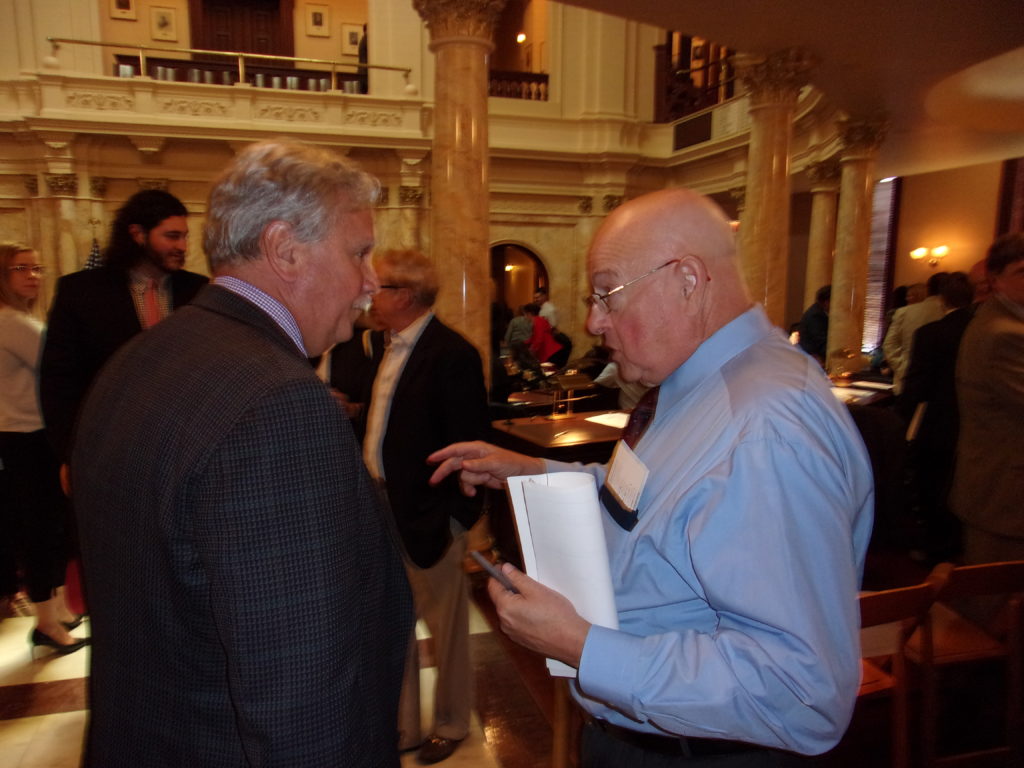Scudder Falls Bridge Tolls Will Worsen Traffic, Pollution

Scudder Falls Bridge Tolls Will Worsen Traffic, Pollution
Drivers using the Scudder Falls Bridge between Mercer County and Bucks County, Pa. on I-295 will begin paying a toll sometime around July 10. Drivers with E-Z Pass will have a $1.25 toll taken from their account. Other drivers will have their license plates scanned and be billed $2.60 by mail. There will be no toll booths. The tolls enacted by the Delaware River Joint Toll Bridge Commission are intended to help fund an ongoing $534 million project to replace the bridge.
“Coming soon to Scudder Falls Bridge on I-295 are tolls that will create even more traffic and pollution. Drivers will look to avoid tolls on the bridge between Mercer County and Bucks County, Pa. by heading to other free bridges. That will increase congestion in those areas. New traffic patterns will divert other cars and trucks. Tolling the bridge was made necessary by an excessive, expensive project that did not need to be built so big and wide. Now fewer vehicles from avoiding tolls and changing patterns will increase pressure on the DRJTBC to keep raising those tolls,” said Jeff Tittel, director of the New Jersey Sierra Club. “This bridge was built wider than was needed, at a cost of $534 million. Now we have to put tolls on it to pay for it. That will push people to other free bridges, adding traffic there, or they will just go around it. For whom the bridge tolls, it tolls for thee.”
Project construction began in 2017 and is expected to be completed in 2020. The new dual-span bridge will be widened to a total of nine lanes – six traffic lanes plus three auxiliary lanes for merging traffic. The span will include new pedestrian and bike paths. The project also includes road and interchange improvements to I-95 and I-295, 14-foot shoulders and noise abatement walls.
“Tolls on the Scudder Falls Bridge will chase local traffic to free bridges, like Calhoun Street in Trenton, Washington Crossing and the Lambertville Free Bridge. This will lead to more traffic on older bridges that are not up to standards, adding even more congestion to our neighborhoods and towns. The project design also didn’t incorporate changes in traffic patterns. The rerouting of I-95 from the Pennsylvania Turnpike Extension to the New Jersey Turnpike will divert cars and trucks from the Scudder Falls Bridge. The bridge has been changed from I-95 to I-295,” said Tittel. “People going to free bridges, and bypassing the Scudder Falls Bridge on I-95 is a one-two punch that will reduce toll revenue. That will mean raising tolls and tolling other bridges.”
The bridge replacement project was prompted after the 57-year-old bridge was classified as "functionally obsolete.” Concerns included capacity, safety deficiencies, a lack of shoulders and the geometry of its interchanges.
“This project is much too big, and drivers will now begin paying a higher price for it with the new tolls. The bridge will now be nine lanes instead of four. They could have just added one lane in each direction plus an acceleration lane on land and saved hundreds of millions of dollars. Drivers traveling south will go from five lanes down to two in Pennsylvania. That will cause even more traffic tieups and more pollution. There was no need for the project to be this big. The data collected in 2003 when planning this widening project was already faulty and has gotten worse,” said Tittel. “The Scudder Falls Bridge needed to be repaired and modernized, but this project goes far beyond what was needed.
Those who frequently drive into Pennsylvania and belong to the New Jersey E-Z Pass Group will receive a 40% discount. A driver making 16 trips over any Delaware River Joint Toll Bridge in a calendar month will have their toll reduced to 75 cents.
“Tolls will now go toward paying for a bridge that was not needed and will have significant environmental impacts. The bridge will promote sprawl and overdevelopment, especially in Bucks County, Pa. The project takes valuable parkland and cover over the Delaware and Raritan Canal, affecting water quality. More traffic jams will mean more air pollution. The project fills in wetlands that impact the spawning habitat for the short-nosed sturgeon and other endangered species. The filling in of wetlands and flood plains combined with the taking of parkland and preserved farmland will cause an increase in both noise and air pollution. It will also increase flooding along the Delaware,” said Tittel.
As tolls and changing traffic patterns push people away from Scudder Falls Bridge, toll revenue will drop. That will lead to a push to continue increasing tolls, or adding them to other bridges in the area.
“For all that money, we will see hardly any improvement and there will still be congestion problems because of the design. Daily commuters facing about $20 extra a month will find alternatives. The tolls will push traffic onto older bridges, and drivers on I-95 will avoid the bridge. Fewer vehicles paying tolls will increase pressure to keep raising the tolls, or add them to other bridges. A smaller design adding acceleration lanes on land and one lane in each direction would have been sufficient, and far cheaper. We would not have needed tolls. The only thing this bridge widening will accomplish is adding more greenhouse gases to the atmosphere,” said Jeff Tittel, director of the New Jersey Sierra Club. “This project won’t change the service level on the bridge, but it will impact our wallets.”





